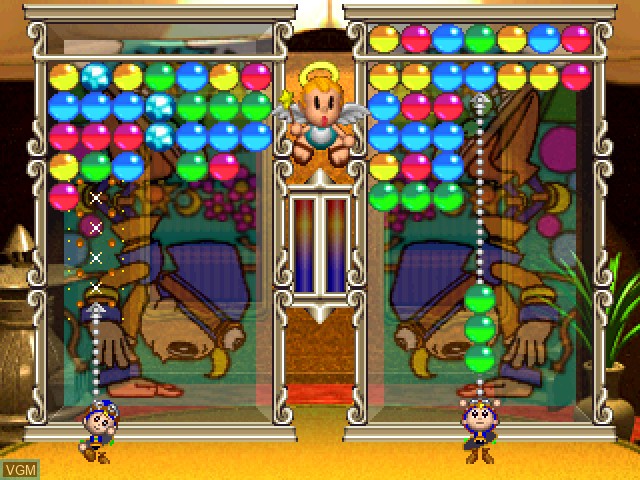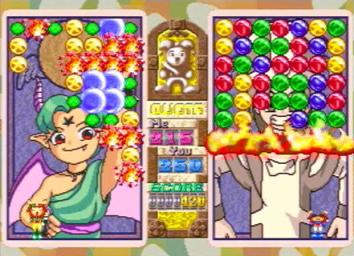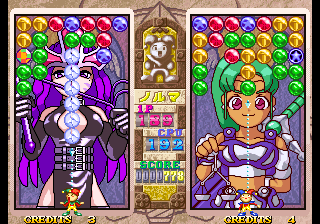


This version was later digitally re-released for the Wii (via Virtual Console) by G-mode on May 29, 2007. The game was ported to the Super Famicom on October 20, 1995, reducing the length of the playfield. The game received numerous sequels with the Magical Drop name, adding new characters while building on the game engine. This was used as the base for the international version, which also includes an announcer (to replace the character voices) and different sets of tiles (replacing colored bubbles with a random group of figures, including snacks, chess pieces, card suits, and slot machine symbols). The original Japanese version of the arcade had a minor update, titled Magical Drop PLUS 1!, which fixed an issue with the timing window of chain reactions. Similar to Tetris Attack, players can make "chain reactions" by quickly creating near-simultaneous matches to either boost their score (in Solo Play) or fill up more of their opponent's playfield (in Battle Mode). The game includes two game modes: the one-player score-based Solo Play (where additional lines of tiles regularly drop from the top of the screen) and two-player competitive Battle Mode (where the second player can be human or CPU opponents).

This is done by pulling down similar tiles (and throwing them back up) to match. Players control a little clown at the bottom of their playfields and try to arrange groups of tiles to make them disappear before a tile reaches past the bottom of the playfield. Overview The Super Famicom version, replacing the little clowns with the characters themselves.Ĭhain Reaction (known in Japan as Magical Drop) is a tile-matching puzzle game developed and released by Data East for arcades throughout 1995.Īn adaptation of an obscure Russian DOS game called Drop-Drop, Chain Reaction is known for its cute art style (with characters based on tarot cards) and two-player competitive gameplay.


 0 kommentar(er)
0 kommentar(er)
